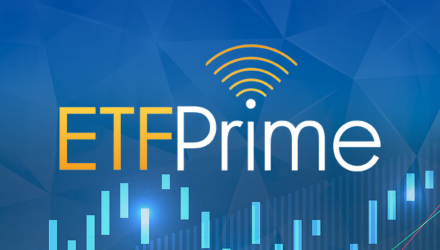On this week’s episode of ETF Prime, host Nate Geraci speaks with ETF Trends’ Managing Editor Lara Crigger, who discusses the SEC’s recent statements regarding leveraged and inverse ETFs and the risks associated with them.
Geraci is also joined by Dawn Global’s founder and CEO Maurits Pot to discuss the Asian Growth Cubs ETF (CUBS), as well as Travis Briggs, the CEO of ROBO Global, who discusses the indexes underpinning ETFs that track robotics and automation, artificial intelligence, and healthcare technology.
Earlier this month, SEC Chair Gary Gensler and SEC Commissioners Lee and Crenshaw released statements regarding the risks that leveraged and inverse ETFs can pose for investors and markets and the need for a better regulatory framework around this type of investment vehicle, Geraci explained. The statements came one day after the SEC approved a rule change that will allow the listing of a leveraged and an inverse ETF, each based on VIX futures.
Crigger believes that the two ETFs were approved because the exchange and sponsor, Velocity Shares, had “met the letter of the law as it exists currently, but perhaps the filing may have also re-highlighted the fact that maybe the law needs some updating.”
With over 200 leveraged and inverse ETF options available, the market share of these ETFs ($78 billion in assets under management) isn’t significant compared to the ETF universe as a whole, but it is growing, explains Crigger. The appeal is perhaps even greater right now while markets are somewhat uncertain, with investors looking for leveraged plays to take advantage of heightened market uncertainty.
“Basically, the SEC wants better communication for investors around the complexities and risks of these funds,” said Crigger, and she theorized that they are looking for a better way to alert and warn investors before they purchase one of these types of funds.
With the recent statements released by Commissioners Gensler, Lee, and Crenshaw after the approval by the SEC of the two ETFs, Crigger believes “what the SEC is signaling loud and clear is that a rule change is coming.”
She went on to discuss the difference between the two approved ETFs from Volatility Shares and the ETNs at the center of the ‘Volmageddon’ incident in 2018, in which market volatility caused a 90% single-day loss in the value of short volatility ETPs at the time.
Crigger also highlights that in the statements from Commissioners Lee and Crenshaw in discussing the better protections of 1940 Act funds versus 1933 Act ones; “’40 Act funds have limitations on their ability to incur leverage, and I think that’s going to be interesting because leverage is crucial to the equation when you’re talking about futures exposure,” Crigger said. It’s an issue that could potentially interfere with the ability of a fund to track its underlying asset and could possibly lead to unintended consequences in regards to a bitcoin ETF.
Switching to discuss a bitcoin futures ETF possible approval next week by the SEC, Crigger said she thinks it will happen if not next week, then at least “sooner rather than later,” but that Gensler has made it abundantly clear that a direct exposure ETF for the popular cryptocurrency is not something the Commission would approve as things stand now.
‘CUBS’ and the Indexing within Robotics
Next up was Maurits Pot, founder and CEO of Dawn Global, who launched CUBS earlier this year. The ETF invests in five emerging and frontier market countries experiencing rapid growth in Asia and is the first of its kind to offer active, thematic investing within emerging and frontier markets, Geraci explained.
The countries invested in are “large, liquid, fast-growing, digitally enabled but have low to no exposure to foreign investors,” all located within Southeast Asia, Pot explains. He believes that these represent the five big economies of tomorrow within emerging markets while also investing in the sectors that will perform well looking forward. The countries included within the ETF are Bangladesh, Indonesia, Pakistan, the Philippines, and Vietnam.
There is also an ESG slant to the portfolio, with Dawn Global interfacing directly with each security they invest in, and excluding companies involved or relating to defense, fossil fuels, gambling, mining, and tobacco as identified by the sub-advisor, Kingsway Capital Partners Limited. All of the countries invested in stand poised to experience rapid growth in many industries.
Last up is Travis Briggs, CEO and partner of ROBO Global, an index, advisory, and research firm. Briggs was there to discuss the ROBO Indexes. The most popular ETF benchmarked to one of their indexes, the ROBO Global Robotics and Automation Index ETF (ROBO), was the first mover on the robotics market; other offerings include the ROBO Global Healthcare Technology and Innovation ETF (HTEC) as well as the ROBO Global Artificial Intelligence ETF (THNQ).
“We took the approach of capturing the entire value chain of automation,” Briggs explained, regarding how ROBO Global initially built their portfolio, including both the companies working within robotics and also those that were enabling automation within robotics. As the industry grew, ROBO Global saw the need for a separate healthcare-focused index as robotics and technology expanded hugely within healthcare. The growth of the subsectors both in healthcare and later in AI led to separate indexes and ETF offerings.
Disruptive technologies have historically been difficult to track and predict, said Briggs. “When you’re looking at the smaller MedTech companies, Wall Street hasn’t historically covered them well because they tend to cross over multiple sectors, one, and two it’s just hard to estimate. Typically their growth has been underestimated.”
Listen to the Entire ETF Prime Episode Featuring Lara Crigger:
For more ETF Prime podcast episodes, visit our ETF Prime channel.

